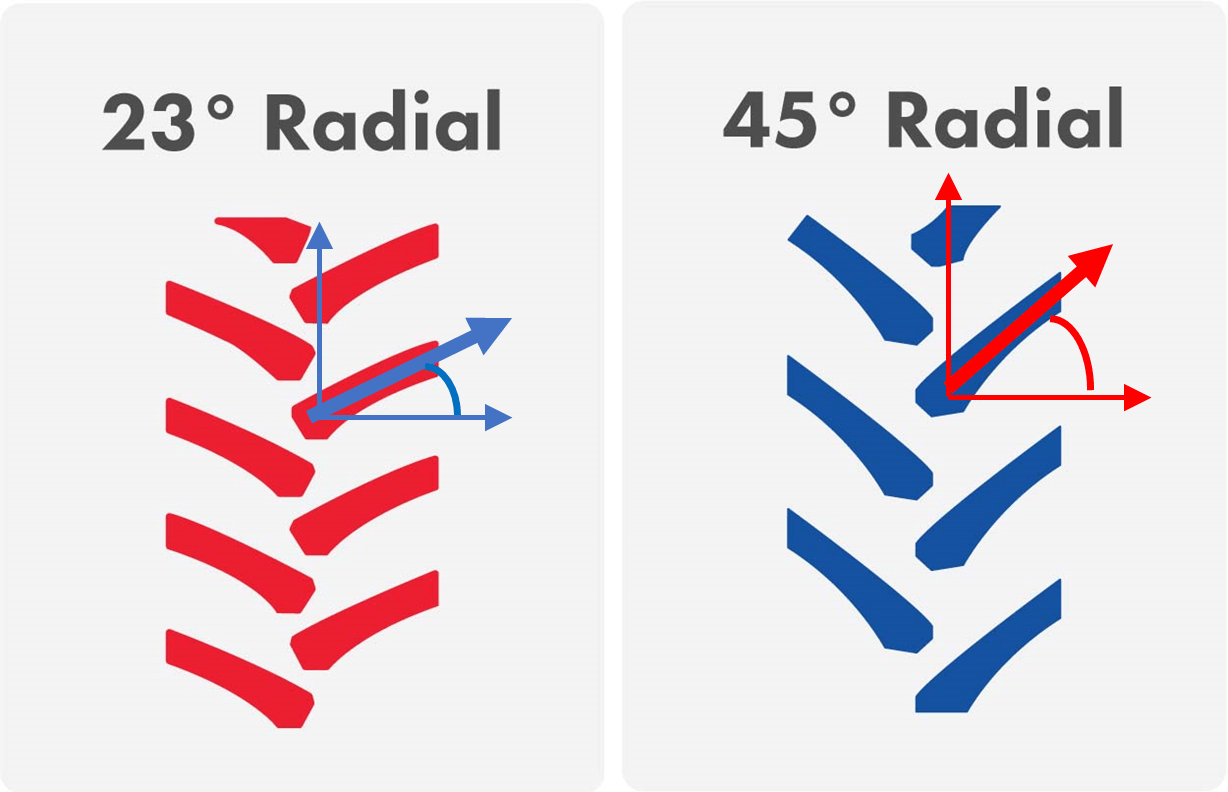AG TIRE TALK KEY TAKEAWAYS
MICHELIN: There are three primary options when it comes to lug angles of large Ag tires. Typical Ag tires are designed with a 45-degree lug angle; however, in the 1950s, Firestone introduced the 23-degree lug angle, and in the early 2000’s, a new hybrid lug design was also introduced to the market.
YOKOHAMA TWS: The 45-degree lug angle is the better choice for farming on hillsides. This is because this lug angle will help the operator keep the equipment in the rows. The lower angle lug tires contribute to equipment side slippage or dog-tracking. This can let the equipment run over existing crops.
MAXAM: IF and VF technology tires perform at top-tier rates when coupled with the 45° lug tread designs, delivering the load, speed, heat resistance, and endurance that is demanded both now and for the years to come.
BKT: Lower degree angles seem to do well in the field but do not handle the roads as well.
PRECISION INFLATION: Lower bar angles provide more traction, 23 degree, N. America. Higher bar angles, 45 degree, wear longer in high road usage, like Europe.
ASCENSO: Why are 45-degree lugs on R1- R1W tires becoming dominant? Probably because it seems to meet in the sweet spot of traction and ride and gives a good net-to-void ratio for wear.
YOKOHAMA OFF-HIGHWAY TIRES AMERICA: The continuous angle tractor tire lug dates back to the era of steel wheels. It’s an enduring design, but some tire manufacturers have innovated more effective patterns that update tire technology to better serve today’s modern machinery.
Yokohama TWS
Chris Neidert: AG Marketing, Training and Development Manager for Trelleborg & Mitas Tires – North America
Tread Design Differences
Let’s establish some understanding of what we are talking about with the term “lug angle”. 45-degree and 23-degree lug angles are the most common. The number comes from the angle of the lug in reference to the horizontal. As seen in the graphics below, a typical 23-degree tread lug is usually flatter, or more towards the horizontal and the 45-degree lug will point more towards the vertical.
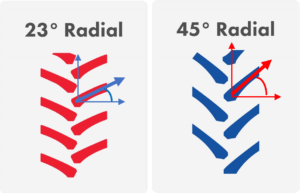
Why does continuous angle 45-Degree Lug optimize both Field & Road Performance?
Trelleborg and Mitas have always maintained the preference of a 45-degree lug angle is the best for both worlds. In field performance and on-road performance. This tread design has a European influence since European farmers do a lot of roading. This is due to the smaller farms in Europe and the need to travel from field to field on the “road”. This design offers good field performance and very good smooth ride on the road. Our feeling is with lower degree lugs, meaning the lugs being more angled towards the horizontal, a washboard effect is created. The effect contributes to a rougher ride.

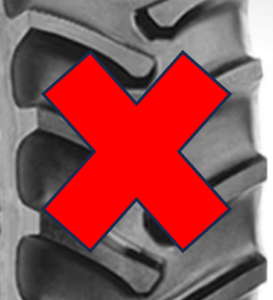
What are benefits of Lower Degree/Higher Degree Angle?
Dry Soil operation – The lower degree lug angle may lend itself to better traction in dry soil. Not sure how many areas of the country, continually operate in dry soil. If the grower does operate in that type of soil, chances are they will still need to road the tractor to get to their next field. The washboard ride will come into play.
Sidehill operation – the 45-degree lug angle is the better choice for farming on hillsides. This is because this lug angle will help the operator keep the equipment in the rows. The lower angle lug tires contribute to equipment side slippage or dog-tracking. This can let the equipment run over existing crops.
Traction – 45-degree lug tires have wider lug spacing. This will enable the tire to clean out when operating in wet, sticky, and muddy conditions. The lower lug angle tires tend to pack up with mud and debris in these conditions. Traction will be compromised.
Poor Road Performance/Improved Road Performance
Continuing our theme on the 45-degree lug angle is the best of both worlds (in field and on road), the higher the lug angle the better the ride. As the lug angle moves more towards the vertical, the lug face will stay in contact with the road longer as the tire moves through the footprint. This longer lug contact will provide a smooth transition from lug face to lug face. This will make for a smoother ride than a lower angled tire- the lower lug angle tire will have gaps between lug contact with the road, creating that washboard effect and a rougher ride.
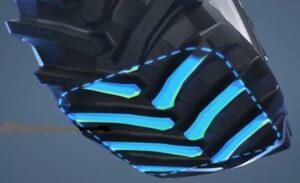
When do you recommend departure from traditional R-1/R-1W Design?
What tread design alternative do you recommend?
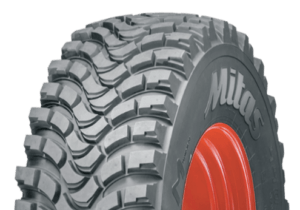
Many applications do not require the aggressive and deep tread depths that are characteristic of the R-1 & R-1W designs- examples are roadside mowing and snow removal. I’m sure we have all been traveling on the freeways and the roads outside of our town. Those tractors we see doing that mowing are usually operating in grass. Maybe taller grass than our yards but grass none the less. The tread pattern on the left is ideal for that application. Shallower tread depth and more of an all-season design. It lends itself to less ground disturbance, longer wear and still providing the needed traction to get the job done. Depending on where you live, snow removal is another perfect application for this tread design.

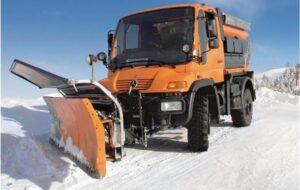
Maxam Tire International
Greg W. Gilland: Vice President Global Agriculture
When reviewing tire tread designs for traction across various applications and surface conditions, the best traction available for any operation in softer soils or cropped fields would be a flat or horizontal traction bar like a military tank tread or tracked dozer. The horizontal traction bar effect on ride, fuel efficiency, and slip rates quickly moved the agricultural industry to the traditional R-1 chevron design. Early tire tread designs adopted the 23° lug angle that improved the ride while ensuring good field traction and improved fuel efficiency.
The 45° lug concept was initiated by tire manufacturers in Europe as the tractor applications were significantly different than in North America. European applications demanded more time on the road, transporting to the market, or simply moving from the farm to the field in many cases towing implements or cargo. This application requirement in Europe pushed tire manufacturers to adopt the 45° angle chevron design for all powered machinery using R-1, R-1W, R-2, and even R-4 agro-industrial products. This design has become the industry standard as all agricultural tire manufacturers have adopted the 45° lug angle as the optimal design for core farming with both radial and bias ply constructed tires. From the smallest below 65 horsepower machinery to the latest +700 horsepower machinery rolling off the OEM production lines, the 45° lug radial chevron tread from R-1 to R-4’s is leading the product performance expectation to deliver the value that farmers and growers are seeking in their tires.
The MAXAM radial agricultural product offering is centered on our AGRIXTRA tread design that is uniformly standardized across all our standard and VF R-1/R-1W tires- the 45° lug bar allows our tires to deliver improved traction, stability, endurance, and improved wear. Listed below are the key elements of our tread design and the benefits of our engineered features:
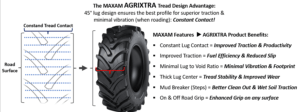
Beyond the field work environment that requires the efficient transmission of the machine engine torque and flotation, the growing market evolution is requiring that agricultural tires deliver the performance traditionally expected of automobile as crops are harvested and brought to market by a tractor. As agricultural machinery continues to grow in weight, engine horsepower, and transmitted torque, the tread design coupled with the growing need for IF & VF technology is rewriting the rules. This gives the structural components of the tire a larger impact on the performance and value the tire must deliver. Therefore, IF and VF technology tires perform at top-tier rates when coupled with the 45° lug tread designs, delivering the load, speed, heat resistance, and endurance that is demanded both now and for the years to come.
Beyond the use of the 45° Lug design with or without improved materials such as IF or VF construction, we are seeing more modified tread designs that increase the contact area of the tires. By increasing the width of the lugs or by reducing the void to lug ratio areas by adding more lugs in the traditional void area, IF and VF technology can increase the contact patch. This is specifically occurring in agro-industrial applications that may include the use of utility tractors, mower tractors, backhoes, compact wheel loaders, and telehandlers. We are seeing the evolution of the R-1 tread design beyond the 45° lug concept from the traditional chevron tread design to a multi-purpose or MPT tread design that emphasizes more rubber contact or additional lugs in the void areas. The goal of these modern designs is to deliver just enough traction to ensure the soil conditions can be met while delivering more contact area. This results in a higher tread endurance required of harder or more demanding surfaces historically reserved for more robust construction application-oriented tires or tread designs. What is clear is that the concept of the 45° lug on R-1 to R-4 tires even with more lugs like the evolving MPT tread concept has successfully met the market need for traction, constant contact, and machine productivity.
MAXAM will be developing additional VF and MPT tires in the coming years to meet the evolving global demand for higher load, platform, or market technological changes, employing our new Ecopoint3 rubber compound technology to rewrite the tire endurance rules and deliver value-centered products that will exceed OEM and farmer expectations.
Michelin Ag
David Graden: Operational Market Manager – Agriculture
There are three primary options when it comes to lug angles of large Ag tires. Typical Ag tires are designed with a 45-degree lug angle; however, in the 1950s, Firestone introduced the 23-degree lug angle, and in the early 2000’s, a new hybrid lug design was also introduced to the market. There is also an ongoing argument of which is better; Firestone’s 23-degree or Michelin’s 45-degree. In short, it really all depends on the application and soil conditions.
Let’s start with the benefits of a 23-degree lug design. Imagine, if you will, an Ag tire with 23-degree lug angles. In general, the lug angle takes up less linear (front to rear) space than a 45-degree angle. Therefore, more lugs can fit around the tire, which means it is possible for more biting edges to come into contact with the soil. In perfect conditions (i.e. flat land and dry soil), this could be a good fit for you. Unfortunately, it seems these conditions are rarely the case for most farmers across North America.
Let’s now look at the 45-degree lug angle and understand why this is the standard for most Ag tires. It’s true that with this lug angle, less lugs can fit around the tire, leading to fewer individual biting edges. However, each lug is longer and continues to circle around the tire a bit more than the 23-degree lug. This introduces 4 benefits: smoother ride, stubble resistance, better mud evacuation in less-than-ideal conditions and greater stability and traction on slopes.
- Smoother ride is a result of the circumferential lug bar; meaning the lug continues around the tire from the center to the outside edge with the next lug overlapping in its contact with the ground. With a 23-degree lug angle, you tend to feel more of a choppy ride, caused by less lug overlap and voids between the lugs.
- Stubble resistance also tends to be better with a 45-degree lug angle due to its sweeping angle outward from the center of the tire to the outside of the tire. Depending on the leading edge of the lugs and rubber compounds, this can be a drastic improvement compared to a 23-degree lug tire.
- Mud evacuation is significantly improved with a 45-degree lug angle vs a 23-degree lug angle. The reasoning for this applies to all tires, including passenger and commercial vehicles. Basically, when pushing through liquid (mud and water), the liquid will always take the path of least resistance as a tire rolls forward, that path of least resistance is straight forward. Well, you can’t design a tire with 0-degree lug angles because you wouldn’t have any tractive capacity to move forward. At Michelin, we have determined that the 45-degree lug angle is best for this scenario. In fact, we have added a “hinge” between the lugs, which aids in the release of mud and compacted soil between the lugs. It works very similarly to slipping the corner of a piece of paper under the edge of a suction cup. This action introduces air under the mud, in addition to flexing as the tire rolls around, to encourage the soil to release from the tire.
- Greater stability and traction on slopes are a big benefit of the 45-degree lug design. If an operator must travel parallel to a hillside, there is more resistance to slipping sideways down a hill because there is more lug edge resisting the downward slope. Finally, lets discuss the hybrid lug design and the pros and cons associated with it. Many years ago, when I was an Ag territory sales rep in Iowa and Nebraska, I remember Alliance launching a new sprayer tire with a hybrid design. At first, I didn’t think this idea would take off, but I was proven wrong. The design did take off. Looking back, I think it was successful because it was a new and innovative design. As time passed, operators realized this design worked well in the sandy bottom ground and performed quite well on the road, although not a fit for very moist soil conditions.
Over the next 10+ years, we have seen many new and innovative hybrid lug designs hit the market. In fact, Michelin has developed a few of its own, but for very specific applications. One example is the Michelin Roadbib tire. Whereas this tire still isn’t a good fit for high torque applications and all soil conditions, it is an excellent design for 80% road travel (like manure spreading contractors) and silage packing. Additional benefits to this design are improved fuel economy on the road, higher speed index, very long tread life and an impressive smooth ride. All of these are a result of more rubber contact with the ground/road, which causes much less friction and movement in the rubber.
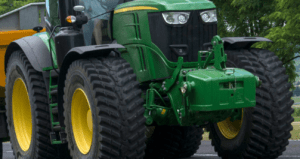
Michelin RoadBib
In summary, farming conditions from year to year are not predictable. Tires are a very large investment and detrimental to the performance and overall efficiency of the machine. The 45-degree lug design is the best option for most conditions. Add the Michelin standard R1W lug depth and you’ve covered all possible soil conditions an operator will have to work through. If you’re a contractor and spend most of your time on the road, between farms, consider a hybrid lug design for improved fuel economy and speed.
BKT USA, Inc.
Dave Paulk: Manager Field Technical Services
Farmers must travel greater distances on highways to get from farm to farm. Tractors have become heavier and travel at faster speeds than in years gone by. Farm equipment such as planters, cultivators, etc. are heavier and higher horsepower tractors are needed. As the equipment and uses of equipment have changed, farm tires and tire technologies have changed to accommodate the uses.
Some of the older farm tire technologies don’t seem to stand up to today’s demands as well since more on the road use is required. A tire and a tread pattern must be used that is good in the field and does a good job when highway travel is needed.
The 45-degree angle tread pattern is a good fit for field and highway use. This tread pattern runs well on the highway as the curved center lugs allow even wear and good contact with the road. This helps by minimizing the uneven wear caused by highway use. This tire allows a comfortable ride on the road.
The 45-degree angle is good in the field as it cleans out well and provides good traction for pulling heavy implements. With the correct air pressure, it gives a good footprint to minimize soil compaction.
When transitioning from the field to road, the 45-degree angle lug is a good tread pattern for both uses.
Lower degree angles seem to do well in the field but do not handle the roads as well. Higher degree angles are somewhat better for highway use but give up some traction in the field. The 45-degree angle tire seems to be a good fit between high angle and low angle lugs and works well in both applications.
Running on the road is a necessity to move equipment from one field to another. Unfortunately, the more farm tires are used on the highway, the faster they wear out. Starting and stopping and the contour of the road are contributing factors for causing tire wear on the road. Although the tread rubber in most farm tires is compounded to improve tire life when running on roads, their main purpose is to perform well in the field.
The R1/R1-W design provides good traction in the field. The lugs generally clean out well because of the lug design. When the tractor is used in dry dirt and/or mainly on the highway where traction isn’t a huge concern, a user may look at a hybrid tire to get better tread wear and prolonged tire life. Hybrid tires (such as a BKT IT696 or IT697) are a good option for heavy highway use. They do provide a moderate amount of traction in the field, but don’t clean out as well as an R1/R-1W design in wet dirt. Because they have a blockier tread design and more tread rubber on the road, they are a good alternative for highway use.

RIDEMAX IT697
Ascenso Tires North America
Nick Phillippi
Why does continuous angle 45-Degree Lug optimize both Field & Road Performance? Not sure it really does. I think it has been seen that way and does perform well if you say we need to decide on one thing for all vehicles, but that shouldn’t be done.
On a 45-Degree Lug, the longer length of the bar lug, along with percentage of center line overlap, all play into improved ride and wear, just as much as the angle.
On the other hand, Lower Bar Lug Angle tires provide more forward and reverse traction; however, road performance is poor.
Specific Applications like sprayers, carts, and planting tractors benefit from more broken hybrid tread patterns- the more roading, the greater the benefit. Ascenso provides the following hybrid tires: VDR901, MDR1000, and UTR240.

Ascenso VDR901

Ascenso MDR1000

Ascenso UTR240
A tire design is usually built using a triangle matrix where TRACTION, RIDE, and WEAR are the key elements of design consideration and the more you prioritize one the more the others suffer.
Why is 45-degree lugs on R1- R1W tires becoming dominant? Probably because it seems to meet in the sweet spot of traction and ride and gives a good net-to-void ratio for wear.
Is this always true? That all depends on the use!
The less the angle, the better the forward traction. Remember when things were slow and forward traction was it?
Zero degrees in soft soil is the highest traction per square inch in both forward and reverse, but oh what a ride on the road! Plus, you have no lateral traction.

I don’t believe 45 degrees should be thought of as the best to optimize both field and road as much as most think.
The challenge is always what is the need 90 % of the time?
I think the market is putting too much into the 10% of the time on most vehicles that are in use. A sprayer, cart, or a planter or silage packer tractor, as most farmers today have task-specific vehicles, should consider the broken tread designs. Any time you add center ride pattern tread you will have much better road wear and driver comfort and handling.
Yokohama Off-Highway Tires America, Inc.
James Crouch, National Product Manager—Agriculture and Forestry
The continuous angle tractor tire lug dates back to the era of steel wheels. It’s an enduring design, but some tire manufacturers have innovated more effective patterns that update tire technology to better serve today’s modern machinery.
One of the most basic innovations has been a multi-angle lug, which uses a shallower angle along the edges of the tread to maximize traction and a sharper angle—as well as overlaps and wider nose designs—in the centerline to reduce wear and improve road handling characteristics.
With our Alliance brand of farm tires, Yokohama Off-Highway Tires has taken many of our R-1 designs to the next level by breaking the curved lug into blocks. That creates more biting edges for traction and allows us to increase the surface-to-void ratio toward the centerline for even better roading, while maximizing void along the edges for grip and self-cleaning. You’ll see this “hybrid tread” pattern on tires like our Alliance 363 and 550 R-1 radials, and modified versions on a wide range of I-2s and I-3s, including our flotation radials and implement tires.
Not surprisingly, there’s a lot of engineering and construction skill that goes into hybrid tread. Too much movement would create excess heat and cracking, so we’ve innovated tie-bars, lug angles and multi-step designs to create the most high-performance tread patterns R-1 tires have ever seen. After all, we left steel wheels behind 100 years ago. It’s high time our tread patterns start to catch up with all the other innovations we’ve made in tires over the past several decades.
Precision Inflation Systems
Ken Brodbeck: VP of Technology
What is the Best Tread Pattern?
First, there are 3 Traction Ag Patterns.
R-1: For general traction work.
R-1W: Like R-1, but with extra tread depth for longer life.
R-2: Rice and Cane farming, twice the R-1 tread depth.
Most tire companies make several versions of the R-1 and R-1W in various tread patterns. Each company claims their tire is the best for you!
With over 40 years as an Ag. tire engineer, these are the general basics:
- Lower bar angles provide more traction, 23 degree, N. America.
- Higher bar angles, 45 degree, wear longer in high road usage, like Europe.
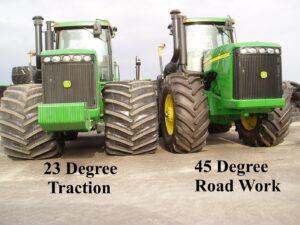
3. Curved bars start with a high bar angle in the center and then move to a lower angle out to the shoulder. Both low and higher bar angle in the same pattern.
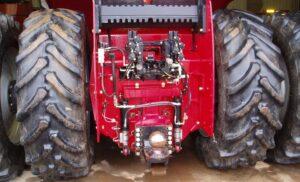
4. Center Rib For high pressure sprayer tires for better road wear.
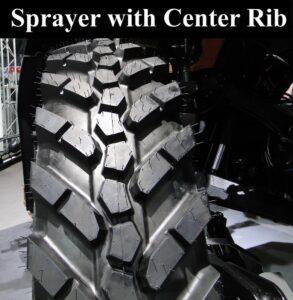
And if you really want the best tread for BOTH FIELD TRACTION and ROAD TRANSPORT, YOU NEED A TIRE WITH THIS FOOTPRINT!
AND, CTIS (CENTRAL TIRE INFLATION SYSTEM)
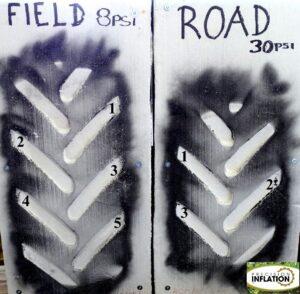
CTIS Optimizes the Field Footprint:
- Maximum Traction
- Maximum Flotation
- Minimize Soil Compaction, Tire pressures at 12 psi or less beat tracks
- Maximize Fuel Economy
CTIS Optimizes the Road Footprint:
- Maximize Fuel Economy
- Minimize Tread Wear
- Carry heavy hitch loads like front fold planters, See photo below
- Tires Run Cooler
- Greatly Improve Steering/Stability at Road Speeds.
CTIS makes Every Tread Pattern the BEST for both FIELD AND ROAD!!
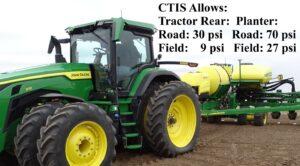
All information is provided in this blog solely to provoke thought. All deductions made from information on this site must be confirmed by Certified Ag Tire Dealer & Tire Manufacturer before use. Ag Tire Talk does not recommend anyone conduct tire service work with exception of Certified Ag Tire Dealer Professionals.

